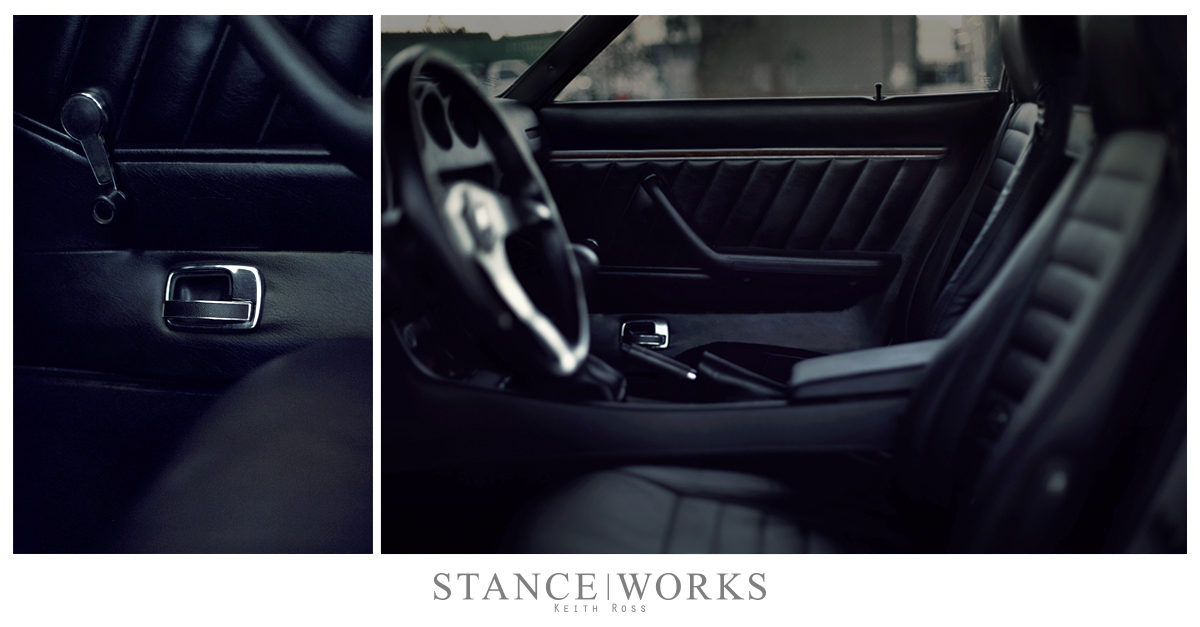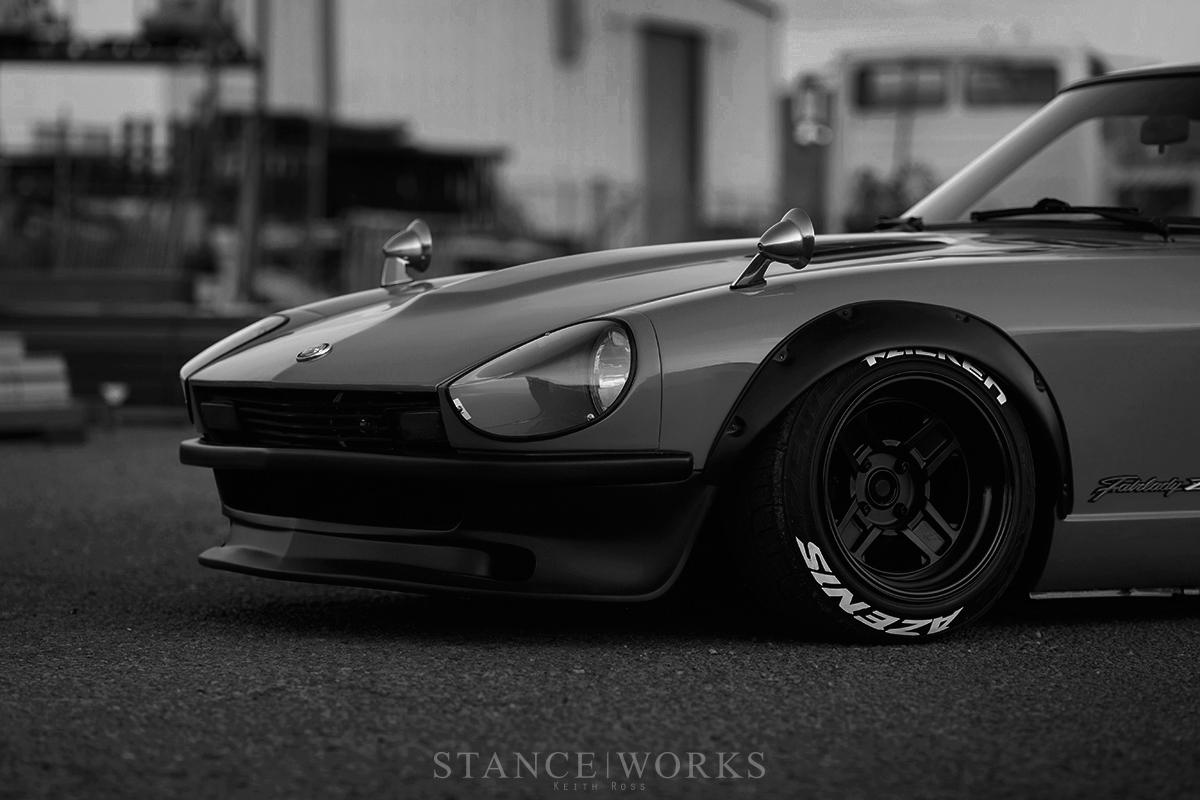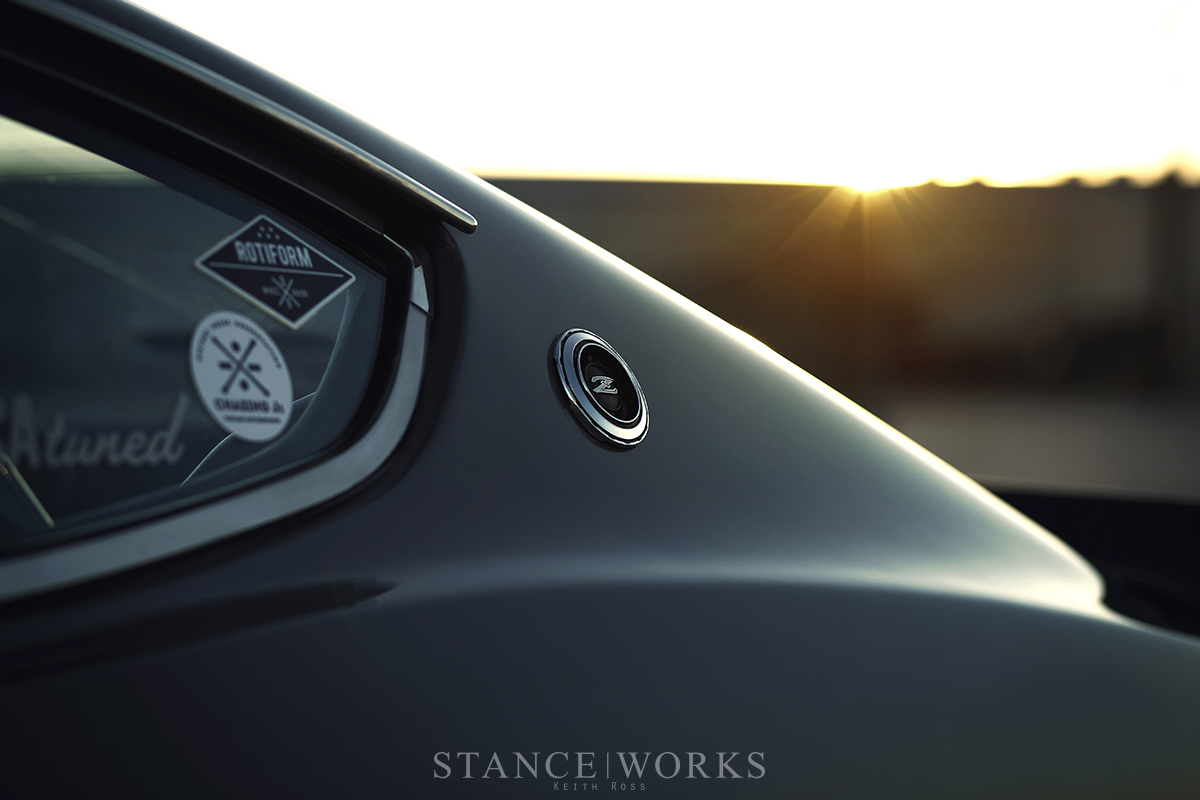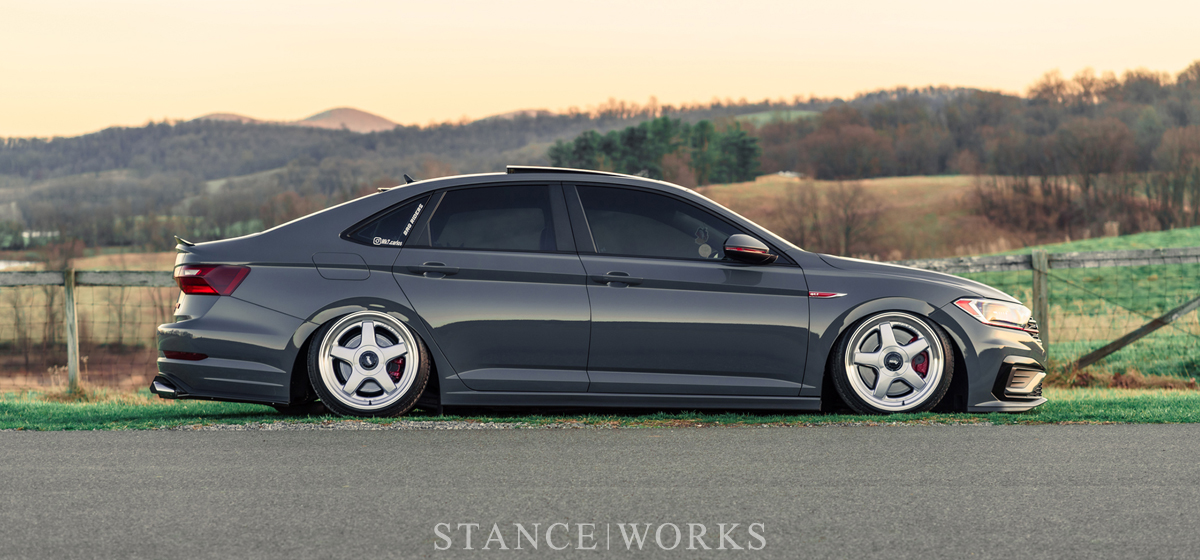If you’re a regular reader of the StanceWorks homepage, and have been for some time, it’s quite unlikely that you managed to miss Keith Ross’s 1966 Volvo Amazon Coupe – after all, it’s one of the most successful articles in StanceWorks history, and with good reason… It’s hard not to love a classic, and one as well-executed as Keith’s black-on-black Swedish saloon is worthy of notable praise. With the Volvo holding position as one of our favorite feature cars to date, it should stand with expectation that Keith Ross’s latest build follows in its footsteps – and with that, we’re proud to share his 1977 Datsun 280Z.
Keith’s connection to the Z stretches back decades, well into his youth, where memories of his father’s own Z car fill a special place within him. As such, Keith had yet to complete the Volvo when he conjured up the idea of the Datsun build in his head. He knew he’d own one eventually, and fittingly, he planned out a majority of the project before ever acquiring the car. Once the Volvo was finished, and of course, thoroughly enjoyed, he made the moves to sell it, which secured the funds for the Datsun at hand.
About an hour outside of Phoenix, Arizona, a yellow Z sat for sale, in need of some serious TLC. Despite its shortcomings, the car drove well – astoundingly so – and after a short test drive, Keith made the purchase, and drove the car home in confidence, knowing the purchase was well-made. The cool October night was a catalyst for an instant love-connection with the Japanese coupe, and with his plans in order, he wasted no time disassembling the car as soon it made its way into the garage.
The first parts to get removed were the cliche ’90s must-haves: an odd rear spoiler, aluminum rocker panel trim, and the obnoxious low-speed impact bumpers were stripped from the car almost immediately – as Keith said, “they had to go.” More parts were pulled from the car, step by step, and within just a few short weeks of purchase, the car was sent off to the paint shop.
While the car was getting the complete treatment at the bodyshop, the aftermarket parts began to pile up back at home. With a desire to embrace a “vintage Japanese race look,” Keith went with an MSA front air dam, 240Z bumpers, a subtle rear spoiler, headlight covers, and fender flares, all of which anxiously waited for the car to return from paint. Because the factory L28E 6-cylinder engine ran so well, the desire for an engine swap dissolved rapidly, and any thought of pursuing performance was quickly dissuaded by the thought of unreliability. Even still, the Z outpaces the old Volvo by an incredible margin.
At the paint shop, the front and side indicator lights, antenna, rear bumper holes, and other tidbits were all shaved for a cleaner, sleeker look. Keith knew his choice of Nardo Grey paint, which had been decided upon long before ever purchasing the car, was the correct choice when he saw the basecoat applied to the body. Once the clear was laid on, it was followed with a ceramic coating to protect it. The resulting finish is a slick, lustrous finish that understatedly highlights everything there is to love about the Datsun’s iconic body lines.
Inside the car, things were in good shape; in all, only the seats and carpet needed attention, and once the seats were reupholstered and the carpet was replaced, Keith capped off the interior with a vintage Momo steering wheel. Otherwise, the interior retains its classic, original, 1970s sports car feel, similar to the authenticity of his Volvo’s interior.
With most of the interior and exterior components of the car solved, Keith then moved on to addressing the car’s suspension, as well as the wheel and tire package. 15×10 Rotiform RB1s were chosen for their classic Japanese influence merged with a modern touch – exactly what Keith was aiming for with the build at hand. The finish is clear and concise: black. The wheels play perfectly off of the black fender flares, which were reworked by Rob Qualls to flow flawlessly with the fender’s shape, as well as the black air dam and spoiler. The black trim and grey paint compliment the car’s polished brightwork, creating a monochromatic silhouette worthy of a second look, or perhaps a third or fourth.
Keith’s track record for suspension leaves little to surprise when it comes to the Z. As a kid of the ’80s, the mini truck craze was in full effect when he was finally able to drive come the mid 1990s. “My first vehicle was a lowered mini truck, my second was another mini truck with air suspension, then a Honda with hydraulics initially, then air bagged,” he says. Despite the fact that he initially purchased coilovers for the Datsun, it should have been clear to Keith that they were never meant to be. The ride quality was great, but as they say, old habits die hard. “That devil on my shoulder said ‘lay the frame on the ground,’ so I turned to Air Lift.” With universal bag-over-coils, the Datsun utilizes Air Lift’s new 3P digital management to control the setup. Along with his friend, Keith Charvonia, the two managed to fit the system and have the car roadworthy once again with minimal downtime, and now, as you can see, the car sits better than ever.
Keith Ross’s Volvo was one of a kind – it was a chassis that few had worked their magic with, and for years to come, we imagine that Keith’s car will be the benchmark to which most Amazons are compared. In all, it’s a tough act to follow, but we feel confident in saying that Keith has done it again. While the S30 is a vastly more popular chassis, we think it’s safe to say that once again, Keith Ross has left his mark.


























